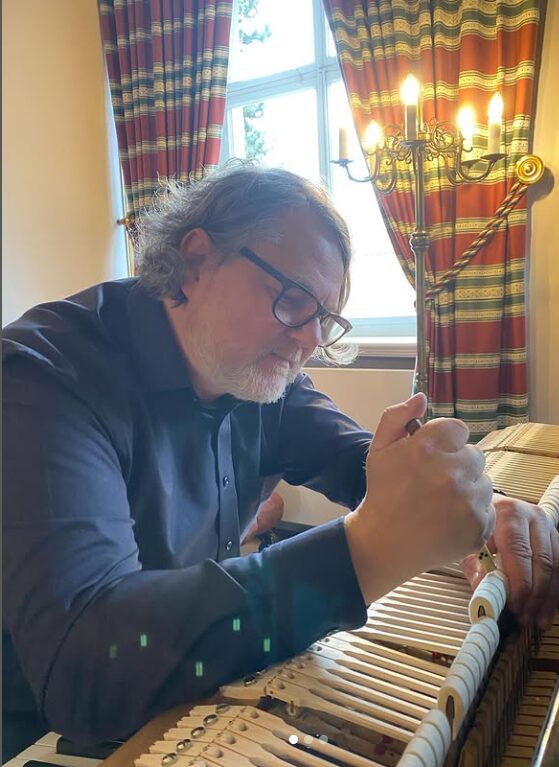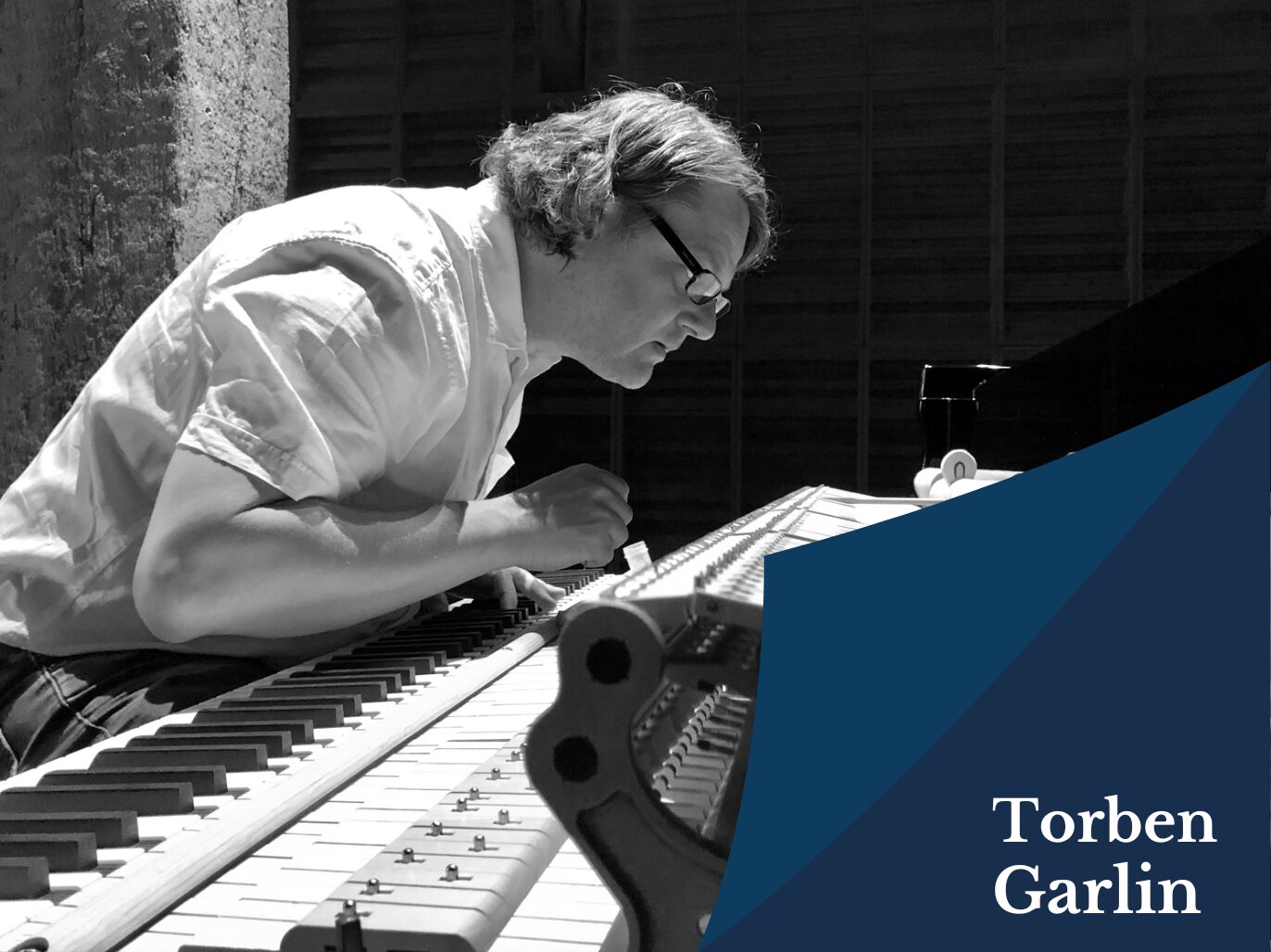It seems quite fitting that to celebrate World Piano Day we bring into the spotlight the unsung heroes of the piano world. Rarely featured in history books and seldom seen on stage, we take a look behind-the-scenes of the mystic profession of piano tuning with piano technician Torben Garlin from Pianomobil. Working regularly with some of the top pianists and in coveted halls such as The Philharmonie Berlin, Fondation Louis Vuitton, Garlin is a reference in his field and travels internationally to share his expertise.
View author's page
Reading time estimated : 8 min
The Evolution of Piano Tuning
Piano tuning became a profession after a drastic technical evolution in keyboard instruments in the 18th century and the implementation of Equal Temperament. The piano’s predecessor, the harpsichord—originally a single-stringed instrument—was slowly replaced with more complicated instruments as we evolved towards our modern piano. The piano would pass through several major developments until the birth of the modern piano in the 18th century, including the change from just intonation to equal temperament.
Equal temperament standardized the intervals between all of the notes, meaning that we could now exploit all of the 12 major and minor scales—Johann Sebastian Bach famously explored this new invention in his work The Well-Tempered Clavier (BWV 846–893). The multiple strings and more complicated mechanisms of the modern piano meant that tuning and maintenance required more specific expertise and became impossible for untrained musicians to manage. As the piano became the favored household instrument, the unique profession of the piano technician bloomed into the industry that it is today.

Torben Garlin’s Path to Piano Tuning
Garlin started his career through a school internship where he spent two weeks discovering the workshop of his future teacher, Rudi Kemper, just before his retirement. Garlin went on to leave school to pursue an apprenticeship to become a Klavierbauer (piano maker).
Garlin recounts his first tasks as a young technician: “I started with small mechanical work, there is a lot of felt and leather inside a piano, and we dismantled a complete upright piano mechanic and then I started removing all the small things I glued again to get a feeling for the instrument and then after a while I could start tuning.”
Garlin’s role as a piano technician means that he is also a sort of general doctor for the piano; he takes care of every part of the piano, from re-felting hammers to tweaking mechanisms. His main focus is voicing and tuning, which he says takes time to master, as modern technicians will tune from A440Hz and then complete the rest by ear. The tuning of a piano can change drastically with changes in humidity and temperature, and Garlin can find himself tuning a piano more than three times before a big concert.
A piano technician is also responsible for tweaking the delicate system of felts, hammers, dampers, and strings to modify the piano’s voicing. Voicing is, as the name suggests, the way that the piano sounds in the hall—the sound colors, expression, dynamics, and volume range. Garlin’s mastery of piano voicing is what makes him a reference in his field.
Understanding the Artist’s Needs
To replicate the right touch and feel on a piano, Garlin engages in deep exchanges with the artist about the sound they want, interpreting their descriptions of sound and feeling into an experience on the piano. Garlin emphasizes the need for the artist to express themselves naturally and explains that his role is to interpret their desires.
He describes the concept of spielgefühl—or playing feel—to illustrate the pianist’s sensation of playing the keyboard: “The best case is that the pianist feels the piano as a part of his musical expression and not like a machine.”
He emphasizes that his role is not to impose technical jargon on the musician but to serve as a translator for their artistic vision:
I don’t want to tell them…what it [the technical jargon] is because their feelings about what they do and don’t like about the sound should be pure. So I’m the translator and that’s my part of the job. They can say whatever they want, for example, a pianist can ask for the middle section to sound more like a male choir or a cello or say areas are more like green bananas and then it’s my target to find a solution for that.
Part of Garlin’s activity as a piano technician is bringing pianos onsite, especially in French halls like the Fondation Louis Vuitton, where in-house pianos are not the status quo. When asked if moving the large but delicate pianos for each concert was hard on the instruments, he joked:
“It’s harder on the technician.”
When describing his typical day, Garlin says he will first assess who is playing: “Every pianist has a special style of playing and their own repertoire. Tuning for Baroque music and tuning for a big Rachmaninoff concerto are two different stories.”
Next, he familiarizes himself with the acoustics of the hall, as this impacts how the piano sounds. Then, he offers his first tuning to the pianist.
For a large piano concerto, he may focus on perfect fifths instead of perfect octaves, making the tuning sound more open and three-dimensional. However, for chamber music or solo recitals, he would prioritize perfect octaves.
After the first tuning, Garlin stays for rehearsals and then makes adjustments to refine his changes.
Earning the Trust of Artists
For Garlin, gaining the artist’s trust is paramount in his work. He collaborates frequently with piano legends such as Kit Armstrong and Alexander Kantorow, thanks to his first-rate reputation.
“It is very important that I create a very close and personal connection to the pianist because at the end of the day the musicians must trust me. We talk a lot about the instrument and about the music, so it is important that the musician can see that I understand what they are doing. I’m the last one who touches the piano before their performance starts, and everything I do must be in line with what they were asking for.”
Working in confidence also means that Garlin has encountered some unusual requests. In one case, a pianist asked him to tune all the notes in the bottom octave of the keyboard to the same pitch to facilitate left-hand jumps in a particularly tricky piece. While he wouldn’t reveal the artist’s identity, those familiar with piano repertoire might have a good guess at the piece in question.
Unsurprisingly, the prerequisites for aspiring piano technicians are an appreciation for classical music and to be able to know their way around the keyboard. While not a professional pianist himself, Garlin often plays the piano during tuning sessions to hear the sound in the hall.
Being able to actually play the piano is very important. I need to understand what they’re talking about. For example, if they’re talking about different ways of pushing the key, I need the sensitivity to understand what they are doing.
He also emphasizes that “this is not a 9 to 5 job” and he will often stay from the first rehearsal in the morning to the end of the concert to make sure that everything goes well and handle last minute tunings and adjustments.
While Garlin wouldn’t single out his favorite pianists, he recalls his first musical love: Piano Concerto in A Minor by Robert Schumann—the piece that introduced him to classical music as a young pianist.
Sadly, the golden age of the piano as a household fixture has long passed and the need for a flourishing piano technician industry is dwindling. Positions like Garlin’s are relatively unique in the industry and while this lets him travel internationally to give masterclasses and share his knowledge, the industry is saturated. But Garlin has many hopes for his industry and for classical music as an art form and he leaves us with these final remarks:
“I hope that people will continue to be drawn to classical music and come to appreciate its value in our lives. It’s not only melody, classical music can offer so much beauty and depth, and yes I hope people will continue to come to concerts. I hope that we can show people that music is not high class or for the elite and that it is open to everybody, and if we can do that then I think we will be going in the right direction.”
